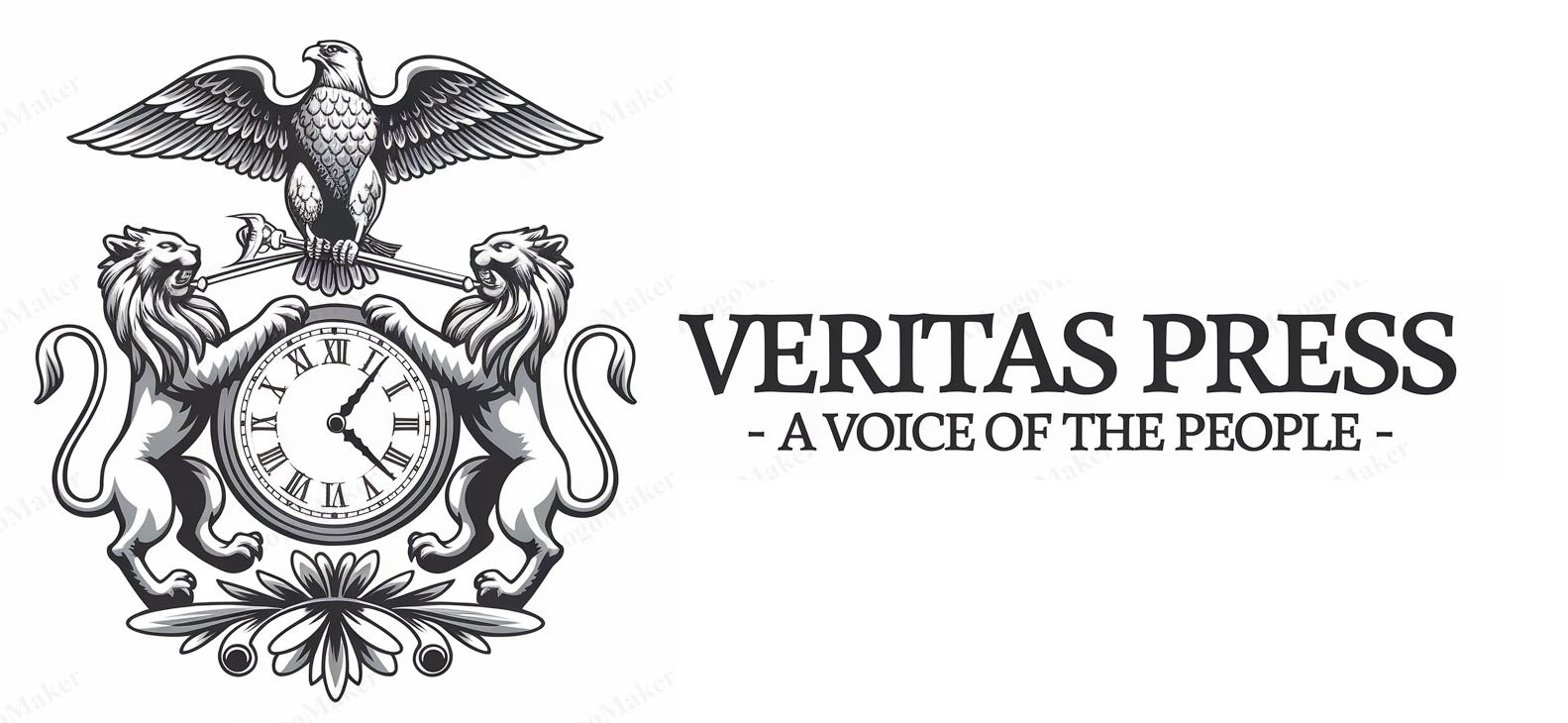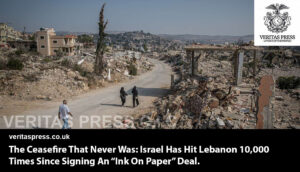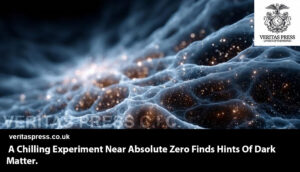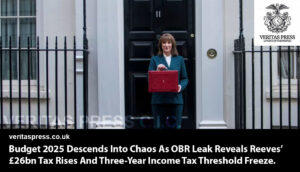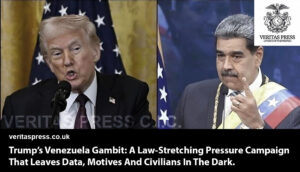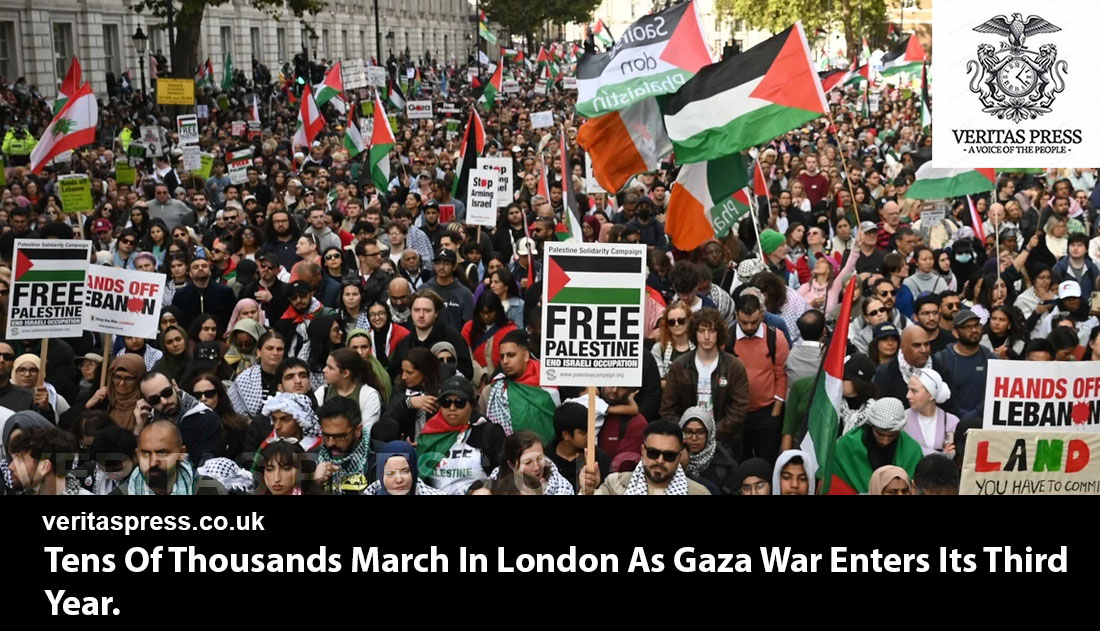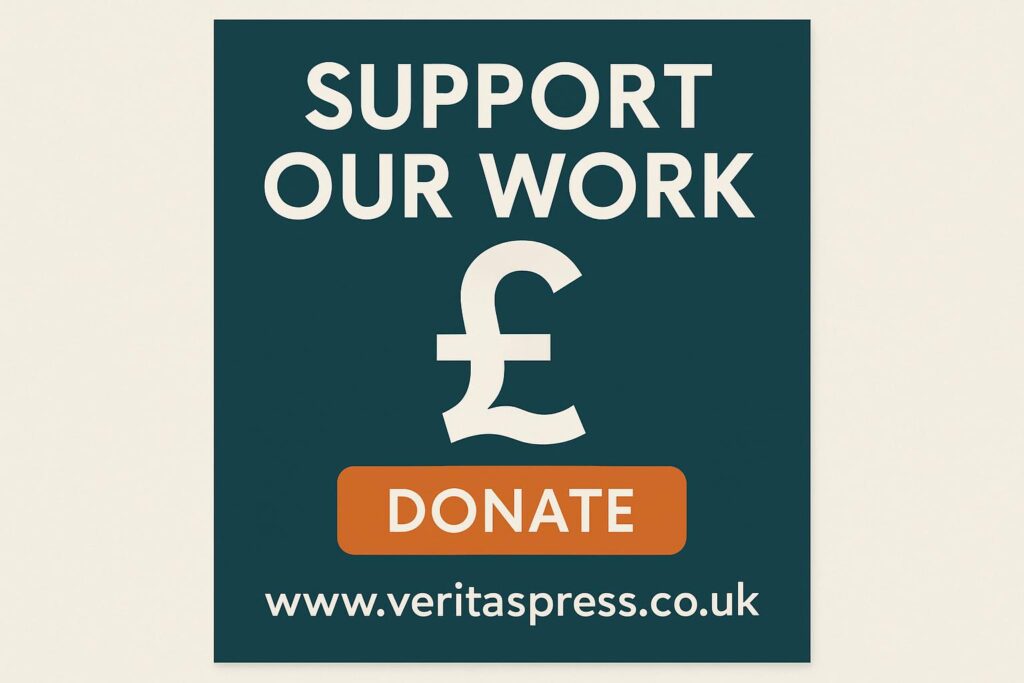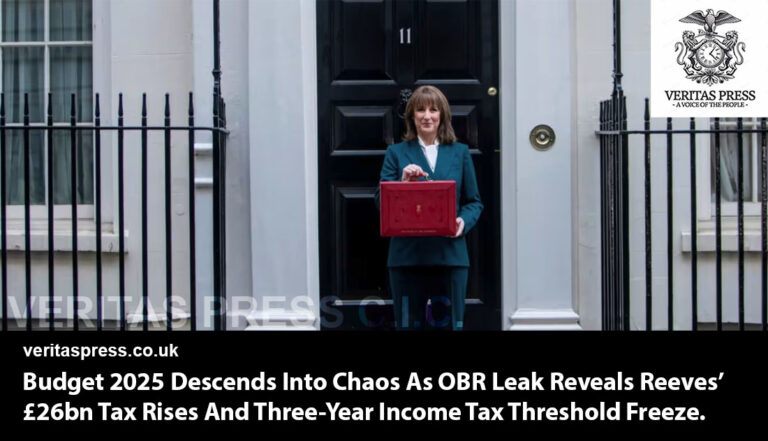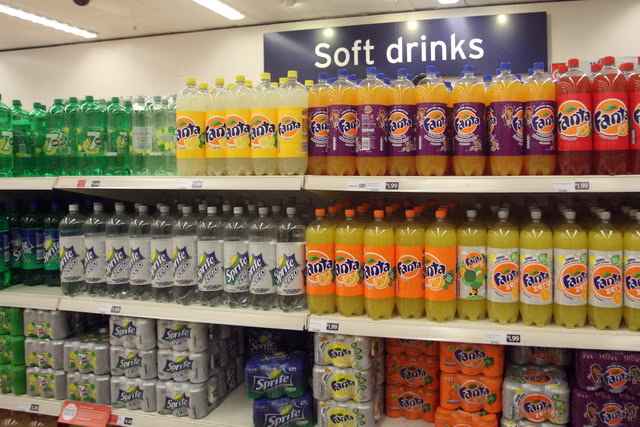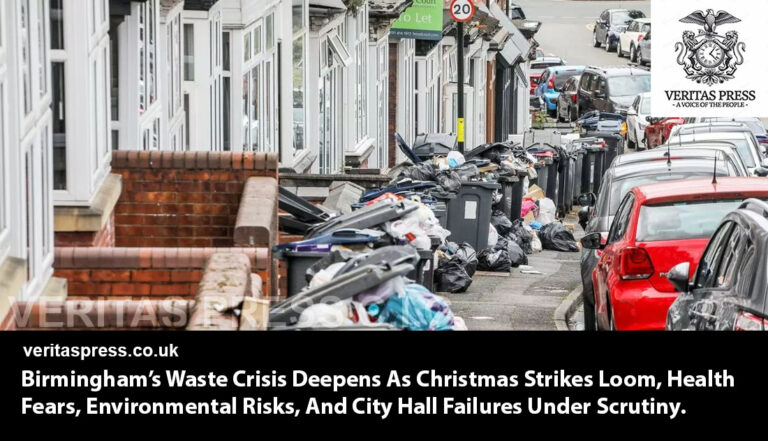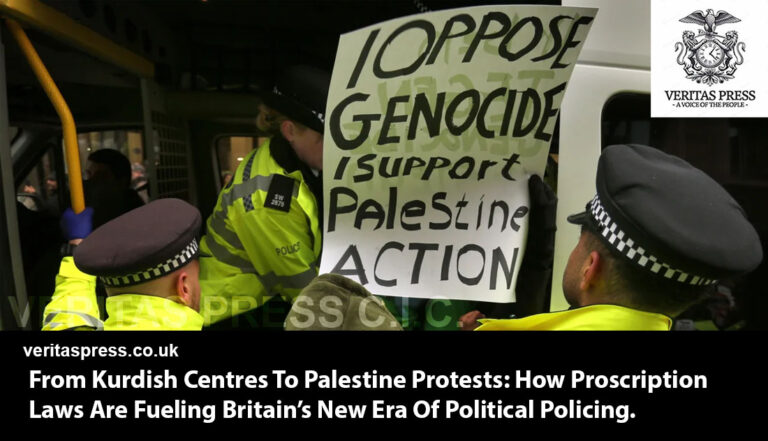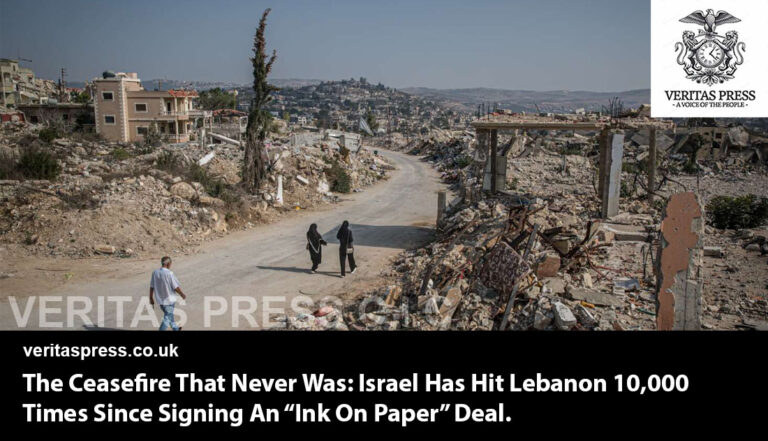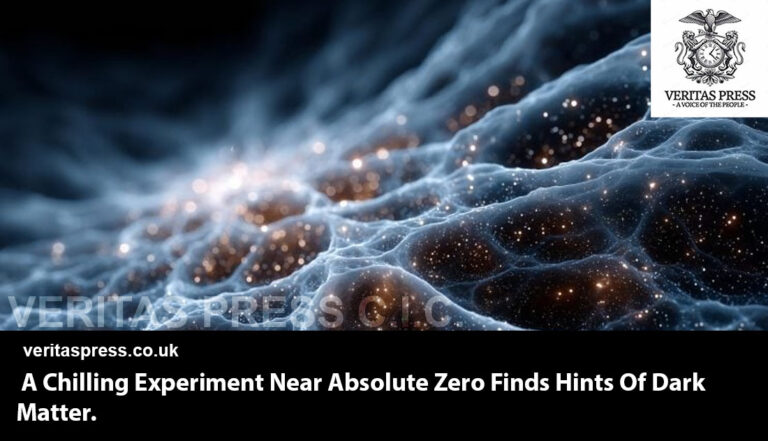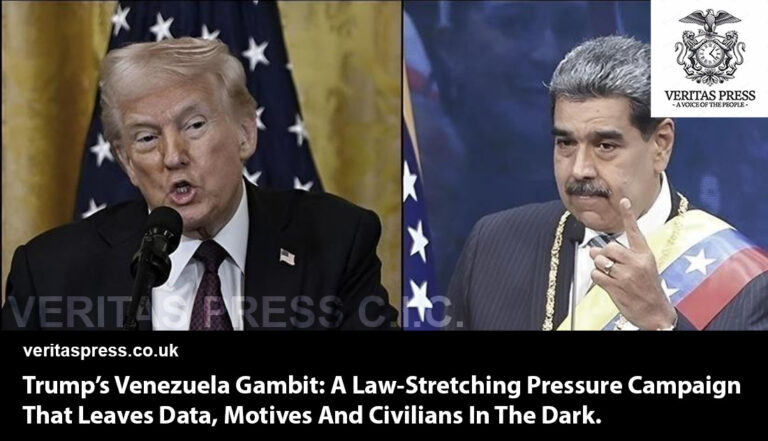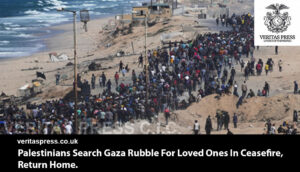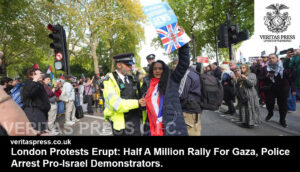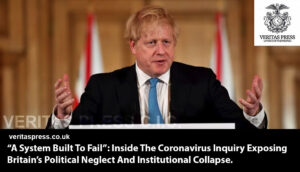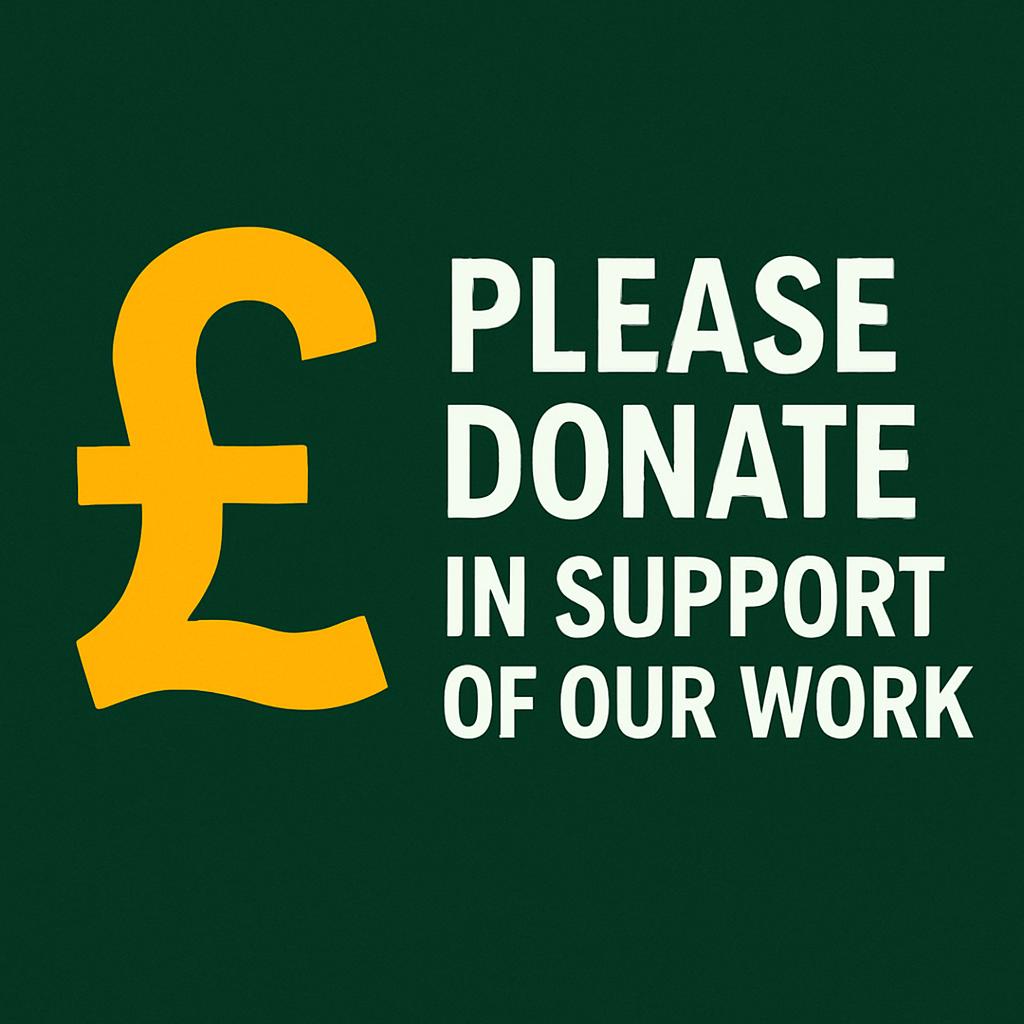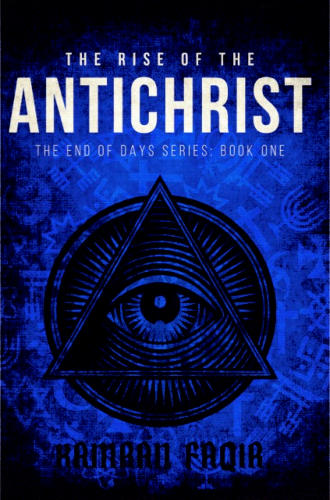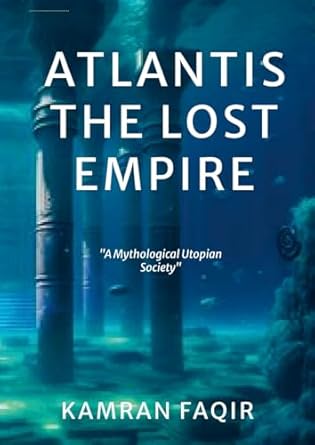LONDON, SATURDAY, 11 OCTOBER 2025 — Tens of thousands of pro-Palestinian protesters flooded central London today to mark the second anniversary of the war in Gaza, just one day after a US-brokered ceasefire came into effect. The demonstration, one of the largest in the UK since the conflict began, unfolded against a backdrop of both hope and deep scepticism about peace prospects.
Ceasefire, Returns Home, And Continued Tension:
On Friday, a truce was implemented between Israel and Hamas, paving the way for displaced Palestinians to begin returning to devastated areas in northern Gaza. Under the agreement, Hamas is expected to release several Israeli hostages by Monday, while Israel will free nearly 2,000 Palestinian detainees, though high-profile figures are excluded from the exchange.
Still, doubts abound. According to commentators and activists, the ceasefire is part of a 20-point plan championed by Donald Trump, fails to address the deeper, structural questions of occupation, accountability, and self-determination.
Back in London, the protest was explicitly held despite the ceasefire, underscoring the view among many supporters that a pause in violence does not equate to justice.
The March: Slogans, Scenes, And Scuffles:
The protest began at Victoria Embankment and wound its way toward Whitehall, passing Westminster Bridge en route. Organisers claimed that more than 500,000 people participated, though independent estimates have been more modest.
Protesters distributed keffiyehs, flyers, and placards with messages such as “From the river to the sea, Palestine will be free”, “It’s not a crime to act against genocide”, and “Starmer has blood on his hands, free Palestine.”
One of the more striking visuals was a woman in a mobility scooter, carrying a sign reading “Palestine. Freedom peace,” with a mannequin in a headdress perched in its rear. Behind her, a column of activists wearing Palestine Solidarity Campaign hi-vis jackets walked hand in hand.
Among the marchers was Jeremy Corbyn, co-founder of Your Party. He helped carry a large banner reading “National March: Free Palestine.”Though he initially remained silent during the chant of “from the rivers to the sea,” later he was seen joining the chant “Palestine will be free.”
The protest was not devoid of confrontations. A small faction of counter-protesters (mainly affiliated with Stop The Hate) stationed themselves at Aldwych and The Strand. Police said a “small group” of counter-protesters breached the permitted protest zone, triggering scuffles. A “small number of arrests” were made.
Among the counter-protesters, one held a sign depicting a bee and the Star of David reading, “It was never about Palestine, it was always about hate.” Others waving Israeli flags played loud music, including heavy metal songs with lyrics such as “you can stick your Palestine up your hole.”
At one point, protesters chanted “death to the IDF.” The use of such chants has drawn fierce debate: supporters say they express resistance to military aggression; critics argue they cross the line into incitement or hate speech.
Arrests, Policing, And Protest Laws:
In advance of the demonstration, Scotland Yard imposed conditions under the Public Order Act, delineating allowed gathering zones and march routes. The intent, police said, was to avoid serious disruption between rival groups.
Last weekend, nearly 500 people were arrested during a protest in London, most under suspicion of supporting the now-banned group Palestine Action. The government responded by proposing stronger protest restrictions, including allowing police to factor in the “cumulative impact” of repeated demonstrations.
Home Secretary Shabana Mahmood has asserted that repeated pro-Palestinian protests engender “considerable fear” within Jewish communities. On the other hand, critics claim the state is undermining civil liberties and criminalising dissent.
Prime Minister Keir Starmer has indicated that the government is reviewing protest laws, particularly concerning controversial chants used during rallies. He has called for a broad assessment of available powers and whether they should be adapted.
Some protest slogans have become flashpoints. For instance, “from the river to the sea, Palestine will be free” is viewed by critics as calling for Israel’s destruction and thus antisemitic. Supporters argue the phrase calls only for freedom across historic Palestine.
Why The Protest Went Ahead (Despite Ceasefire):
Organisers and participants emphasised that the ceasefire is only a temporary lull and does not resolve the underlying politics of occupation, apartheid, or justice for Palestinians. As Ben Jamal (PSC Director) said, “this movement will not end until the Palestinian people are finally free,” charging that the current peace plan “says nothing about the root causes of violence.”
The march also reminds observers that, even in ceasefire moments, the region’s reconstruction, displaced populations, war crimes accountability, political status of Gaza and the West Bank, and the question of Hamas’s role remain deeply contested issues.
Thus, in the eyes of many protest participants, the London march is not merely symbolic: it is a statement that public pressure must continue, not fade, until structural change is achieved.
Broader Global And Domestic Context:
London’s protest is one node in a worldwide upsurge in pro-Palestinian activism. In Amsterdam, for example, around 250,000 people marched on October 5 demanding that the Dutch government adopt a stronger stance on Gaza. Around the globe, activists and civil society groups have struggled with states’ efforts to regulate or suppress dissent in the name of countering extremism or maintaining public order.
In the UK, the controversy over Palestine Action has already triggered waves of arrests and criticism. Since its proscription in July 2025, more than 2,000 arrests have been made in connection with supporting the group. In early September, a Banksy mural appeared outside the Royal Courts of Justice depicting a judge hitting a protester, which many interpreted as a comment on the government’s crackdown on dissent.
Meanwhile, campus protests continue to be a flashpoint. Universities such as Oxford have faced student encampments demanding divestment from Israeli-linked institutions and greater transparency in investments. In Scotland, some student groups displayed banners that glorified October 7, the Hamas attacks, prompting investigations and expulsions.
Reflections & Looking Ahead:
- Ambition vs. Realism: The massive turnout in London signals both the depth of solidarity and the frustration of many activists that peaceful transitions to justice have not materialised. Whether such demonstrations can meaningfully pressure governments remains contested.
- State Power & Democracy: The push to expand police authority, curb certain chants, and factor in “cumulative impact” raises deep questions about the balance between public order and freedom of speech.
- Ceasefire Fragility: History suggests that ceasefires in this conflict have often broken down. Observers and activists alike are wary that unless the political questions are addressed, violence may resume.
- Media & Messaging: The use of charged slogans, graphic signs, and confrontational tactics draws attention, but also provokes backlash. The framing of the protest, and the reactions it engenders, can influence how audiences interpret the legitimacy or extremism of the movement.
- Sustained Mobilisation: The organisers have made clear that they see this as the 32nd national pro-Palestinian demonstration since October 2023, a pattern of sustained mobilisation rather than episodic rallies.
Advertisements
Tags:
